Planting radishes in open ground in spring: sowing dates and care rules
Radish is one of the most popular vegetable crops among gardeners. After all, this is the first vegetable that appears on our tables.
To harvest a rich harvest of delicious root crops, it is necessary to take into account some of the features of growing a vitamin culture. Therefore, it is worth figuring out when and how to plant radishes in spring and summer, and then how to properly care for it.

Content
Features of growing radishes
Radish is considered a cold-tolerant crop.Therefore, for the cultivation of this root crop, it is possible not to select a separate bed, but to plant it earlier than other heat-loving plants, since by the time they are planted in open ground, the crop will already be harvested.
Radish is also a short day culture. It is at 10-12 light days that radish actively grows its root. And when the length of daylight hours increases (up to 13-14 hours), and the temperature rises to +25 degrees, the plant enters the reproduction phase, which is expressed in its arrowing and flowering.
Therefore, when re-sowing radishes in the summer, it is imperative to take this feature into account, as well as to select varieties of a late ripening period, and even better, resistant to shooting.
By the way! The site already has a review article about the best varieties of radish (including late maturing and resistant to shooting).
The main ingredients for success in growing radishes are:
For an early harvest, choose the earliest varieties.
- adherence to the timing of the landing;
- selection of a suitable site, taking into account the characteristics of the radish;
- correct sowing;
- maintaining an optimal level of soil moisture (regular watering);
- pest protection;
- timely harvest.
With all these conditions in mind, you can count on a good radish harvest without much difficulty.
When to sow radishes outdoors: optimal sowing dates in spring and summer
Even a beginner can grow a radish in his garden plot, initially it is only necessary to correctly determine the optimal time for sowing seeds.
When choosing the timing of sowing radish, the following points should be considered:
- if the temperature is 0 to 10 degrees Celsius, the seeds will hatch in slower mode, and the seedlings will appear within 7-14 days;
Note! Radish can withstand temperatures as low as -4 degrees.
- from +10 to +15 degrees - seeds will germinate within 4-7 days;
- if the temperature is kept in the range of +15 - 20 degrees, then the first shoots will appear within 3-4 days.
By the way! The optimum temperature for full growth and development of radishes is considered to be +15 .. + 20 degrees. If the temperature rises, then there is a rapid build-up of tops (as well as shooting and flowering) to the detriment of the formation of root crops.
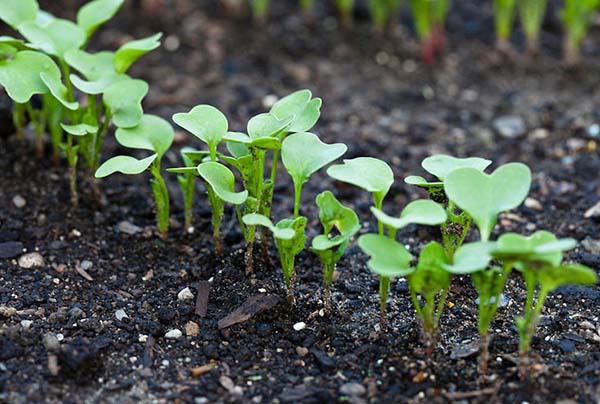
Of course, if you want to get the earliest possible harvest, then you can plant it in a greenhouse.
Planting dates in spring
Thus, the early spring planting of radishes in open ground can be started after the snow melts and the ground warms up a little.
As for the approximate landing dates, they vary depending on the regions and their climatic characteristics:
- So, in the South of Russia, radish can be sown in the second half of March.
- In the middle zone (in the suburbs) - from the 2nd decade or half of April.
- In the Urals and Siberia - from late April to early May, as well as in the North-West (in the Leningrad region).
Advice! To be consistent with the harvest, you can sow radishes every 10-14 days, from mid-March to mid-May (depending on the weather and climatic characteristics of your region).
Summer planting dates
You can sow radishes all summer long, provided that you cover your beds with dark covering material (making an arc greenhouse) in the afternoon to avoid shooting during an excessive summer sunny day. And you will also find suitable non- or weakly shooting varieties that can grow in conditions of long daylight hours.
Important! If you do not have a covering material, then there is no point in planting radishes in June and July (especially if you have a heat up to +30), since at this time not only the maximum daylight hours, but also a rather high temperature, and these 2 factors are contraindicated in this culture. But in the second half of August - the very thing.
Video: how to get delicious radishes in the summer
According to the lunar calendar in 2020
Many gardeners believe that planting radishes should be done according to the lunar calendar.
Auspicious days according to the lunar calendar, in 2020, when it is best to sow radishes in open ground, the following dates are:
- in February - 28, 29;
- in March - 8, 10, 16-19;
- in April - 5-7, 9-15, 17-22, 27-30;
- in May - 2-6, 9, 11, 12, 20-22, 29-31;
- in June - 7-9, 11-14;
- in July - 4, 6, 8-11, 13-16, 27-29;
- in August - 5-10.
However, the summer resident does not always have the opportunity to sow within the specified time frame, so it is important to know when it is strictly forbidden to sow (on the days of the New Moon and Full Moon, as well as during the period when the Moon is in Aquarius, because it is barren and dry sign - italicized.), and these dates must be taken into account in your spring calendar.
Unfavorable days according to the lunar calendar, in 2020 for sowing radishes are the following dates:
- in March - 9,19-21, 24;
- in April - 8,15-17, 23;
- in May - 7,13-14, 22;
- in June - 5,9-11, 21;
- in July - 5,7-8, 20;
- in August -3, 4-5, 19, 31.

According to the lunar calendar, from the magazine "1000 Tips for Summer Residents".
How to properly plant radishes in open ground
To get a good harvest, it is necessary not only to correctly calculate the sowing time, but also to prepare in advance the site for planting and the seeds themselves. For this, it is recommended to carry out a number of preparatory procedures, which will certainly have a favorable effect on the final result.
How to pick a good variety
Note! The site already has material which describes the best varieties of radish.
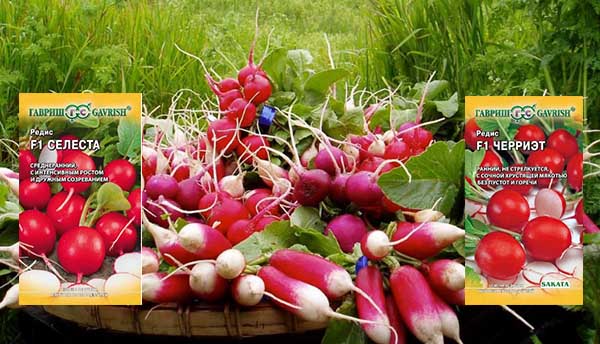
Choosing a place for planting and preparing the beds
For planting radishes, it is better to choose a place that is illuminated by the sun in the early morning and before lunch, or already in the afternoon.
The area given over to radishes should also preferably be protected from drying winds.
As for the soil structure, radish prefers to grow on loose and light soils with neutral or weak acidity levels.
For early spring planting of radishes, it is recommended to prepare a site for planting in the fall. But, of course, this can be done in the spring.
And since all root crops respond well to organic matter, rotted compost or humus should be added at the rate of 1 bucket per square meter. meter of the garden and dig up on a shovel bayonet (25-30 cm).
Important! Just do not bring fresh manure into the ground.
In case you have excessively clay soil on your site, you should loosen it by adding a little sand.
If you allow the use of mineral fertilizers, then they should also be brought in for digging (per 1 square meter of the garden):
- superphosphate 30-40 g (necessarily in the fall, in extreme cases - in the spring);
- potassium sulfide 20-30 g (preferably in autumn, but possible in spring);
- ammonium nitrate or urea 10-15 g (spring only);
And already in the spring, 1-2 weeks before planting, the bed should be properly loosened (1/2 bayonet of the shovel, i.e. 10-15 cm) and leveled so that the bed was without any irregularities.
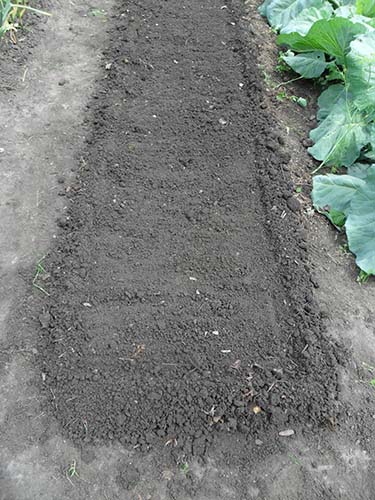
Advice! To help the ground warm up faster, cover the beds with plastic wrap or white agrofibre a week before planting.
Crop rotation and crop proximity rules
Good predecessors, after which you can plant radishes, are all crops, except for the cruciferous family (radish itself, radish, daikon, watercress, cabbage, mustard,), since they are prone to the same diseases and pests.
Radishes can be successfully grown in mixed beds next to a variety of greens (spinach, parsley, lettuce), onions, garlic, carrots, cabbage, tomatoes, cucumbers, strawberries, corn, beans and peas.
Ideal neighbors for radishes are lettuce and head salad.
Presowing preparation and seed treatment
Before sowing radishes, seed preparation should be carried out, which will significantly increase the percentage of their germination.
So, initially it is desirable to carry out their selection (calibration), excluding damaged and defective specimens.
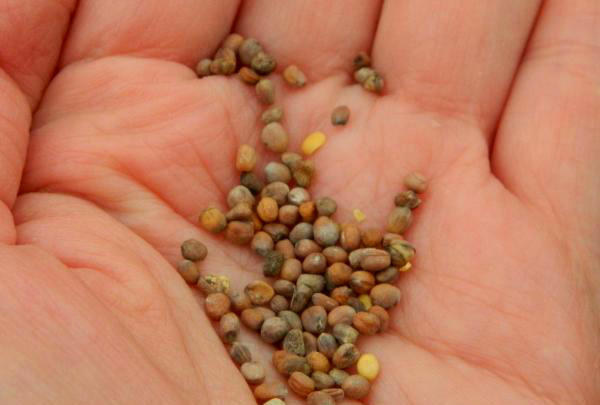
In the future, to determine their viability, it is necessary:
- dip the seeds in a saline solution at the rate of 10 g of salt per 200 ml of water;
- soak for 2 minutes, stirring occasionally with a stick or spoon;
- drain all the seeds that have floated to the surface;
- all specimens that have settled to the bottom should be rinsed under running water and dried, since they will be used for sowing.
To exclude damage to seedlings by fungal diseases, it is recommended to carry out disinfection radish seeds.
As a rule, they are disinfected in a solution of potassium permanganate according to the following instructions:
- dissolve potassium permanganate in water so that the solution acquires a dark pink hue;
- wrap the radish seeds in a gauze bag and immerse them in the solution for 20-30 minutes;
- after the time has elapsed, rinse in clean water and dry to a loose state.
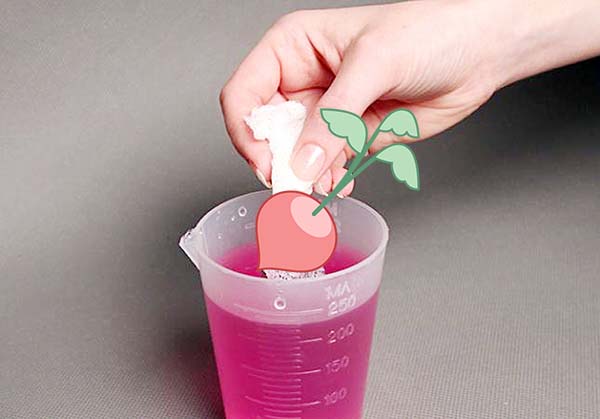
Advice! It is much more effective to use a solution to disinfect seeds. Fitosporin (according to the instructions).
To stimulate the growth processes of seeds, you can conduct themsoaking in growth stimulants (regulators) such as Epin or Zircon, which will help to strengthen the immune system and ensure the full development of plants in the future. After that, the seeds must be dried and sown.
The surest way to get guaranteed seedlings is germinate seeds radishes in a damp napkin, cotton pads or moistened toilet paper, which can be soaked in both water and the same growth stimulant.
In the case of early spring planting of radishes in open ground (at the end of March), it is recommended to carry out hardening seeds to increase their resistance to possible temperature changes. This procedure is carried out as follows:
- wrap the planting material and leave for 1 day at room temperature;
- then transfer to the refrigerator again for a day;
- repeat the alternation of contrast content for 3-4 days;
- sowing in moist soil.
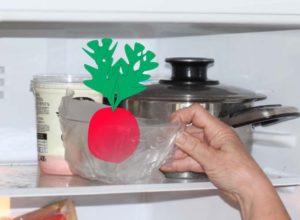
Important! It is necessary to plant radish seeds in open ground immediately after the preparatory procedures, since the growth processes in them have already been activated.
Direct seeding: different planting methods
There are several ways to plant radishes. And you will have to choose the most optimal one for yourself based on the area of your site and personal preferences, as well as opportunities.
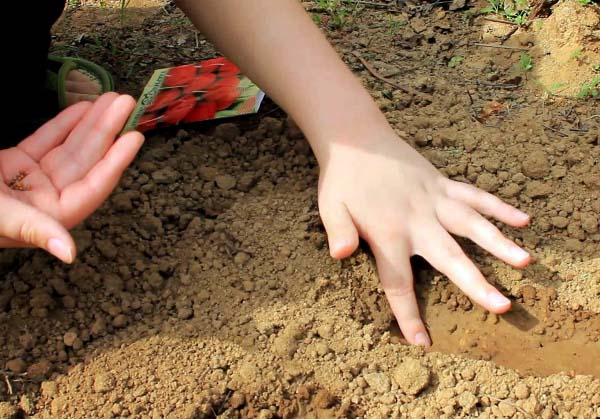
The most common method is radish planting into grooves in rows.
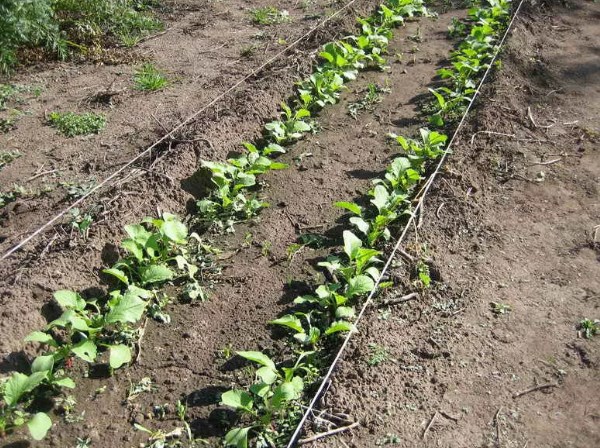
- Smooth the surface of the bed.
- Make grooves 1-3 cm deep (depending on the variety) and with a row spacing of 10-15 cm (20 cm is possible).
Very convenient for cutting grooves to use Fokin's flat cutter... So, you can poke a radish with them after it rises.
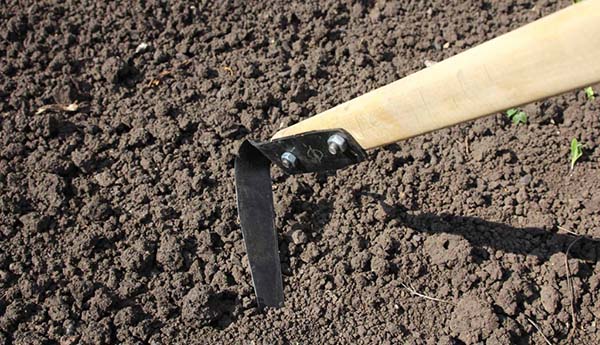
- Spill abundantly with water and allow moisture to absorb.
- Spread the seeds in the grooves.
If you have prepared and processed seeds in advance, then they can be sown at a distance of 4-5 cm from each other. In the case of planting dry seeds and generally for safety net, it is better to scatter the planting material at a closer distance.
- Now you need to cover the seeds with earth and compact (put plywood on top and walk on it) so that there are no voids.
Advice! If it's still cool enough outside, then you can put an eggplant with water between the rows (it will be something like a heat accumulator), and cover the bed with a film or covering material on top. This should also be done if the weather is dry and windy to prevent dry earth crust formation.
Video: how to properly plant radishes in open ground in spring
The second common method of planting radishes in open ground is suitable for gardeners who have a small garden plot and want to sow and grow more. Therefore, in this case, the landing is carried out one continuous canvas. And in order to place the seeds at the optimal distance from each other, use egg cassettes.
Likewise, you can make indentations with a stick or any other device.
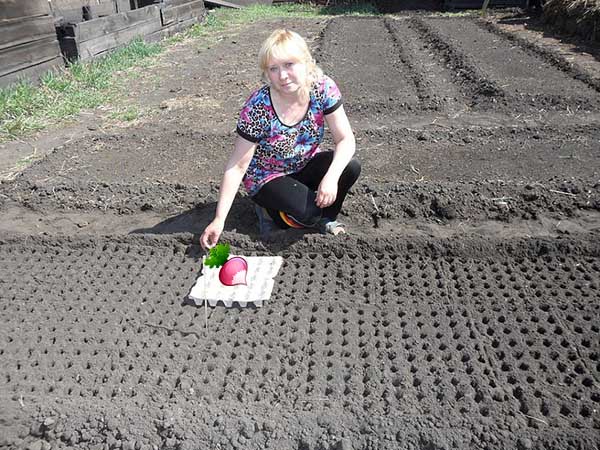
This method can be used after thorough cleaning of the beds from weeds, because in the future, it will not be possible to remove them before harvest.
- As always, you first need to level the surface of the garden.
- Then pour it abundantly with water and wait until all the moisture is absorbed.
- Press the cassette to the ground so that the cells are clearly printed.
- Place the seeds, one at a time, in each cavity (cell).
- Sprinkle the crops with earth and compact (for example, if the bed is small, then you can put the plywood on top and walk on it with your feet) for better contact with the soil.
Video: planting a radish one or two - a large garden bed in 15 minutes
Further care of radishes: rules for growing in the open field
Depending on the temperature, the first shoots will appear on days 3-14. And after the seedlings get a little stronger, if you covered the bed with a film, then it can be completely removed.
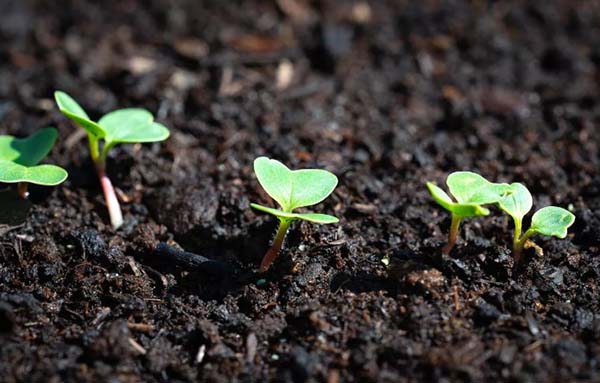
Although at first you can still cover it at night.
In the future, taking care of the radish is quite simple.
Hilling, thinning, loosening and weeding
After the radish rises, you can poke it up with the help of the Fokin flat cutter.
In the first true leaf stage, thinning radishes can be done if you have over-thickened your plantings. The optimum distance between roots is 5 cm.
Then, as the radish grows, it is necessary to regularly loosen the soil to improve oxygen access to the roots. It is especially important to loosen the row spacing after each watering to prevent the formation of a dry crust on the soil.
It is also recommended to promptly remove weeds, which will impede the full growth of root crops and take nutrients from the soil.
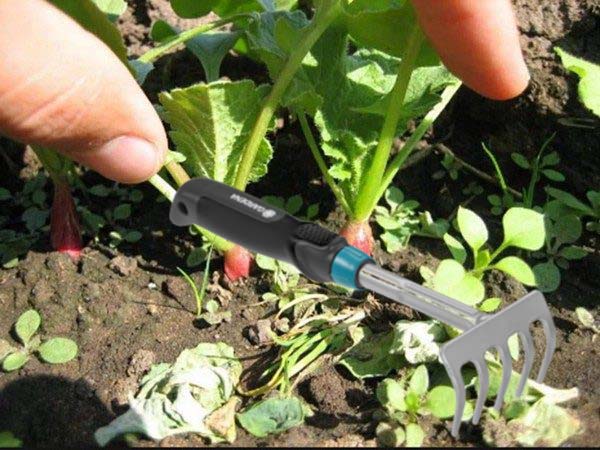
Watering
Radish is a moisture-loving vegetable, and therefore, for its active growth and development, it is necessary that the soil is constantly moderately moist... But at the same time, a certain balance should be maintained, since excess moisture leads to decay of root crops, and lack of watering leads to the formation of small and bitter root crops. In the event that you dry out the ground and then pour it abruptly abundantly, then the root crops can simply crack.
Thus, to get a rich harvest of radishes, it must be watered regularly.
Note! Most of all moisture is required for radishes during its active ripening - filling of root crops.
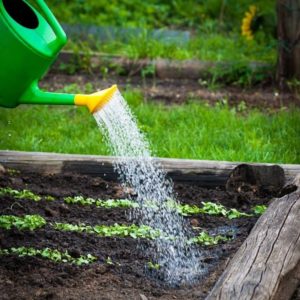
Top dressing
The growing season of this vegetable is relatively short, and therefore, when fertilizing the soil before planting, there will be enough nutrients for the full development of the radish.
But if this has not been done, then it is recommended to spend a week after the emergence of shoots (in the phase of the first true leaves) one single top dressing radish nitrogen fertilizer. For example, if you are an organic advocate, use mullein solution or chicken droppings. Or, as an option, you can use mineral nitrogen fertilizer - ammonium nitrate (15-20 grams per 10 liters of water).
Note! It is important not to overdo it with nitrogen fertilizers, since their excess leads to an increased growth of green mass to the detriment of the formation of root crops, as well as the accumulation of nitrates.
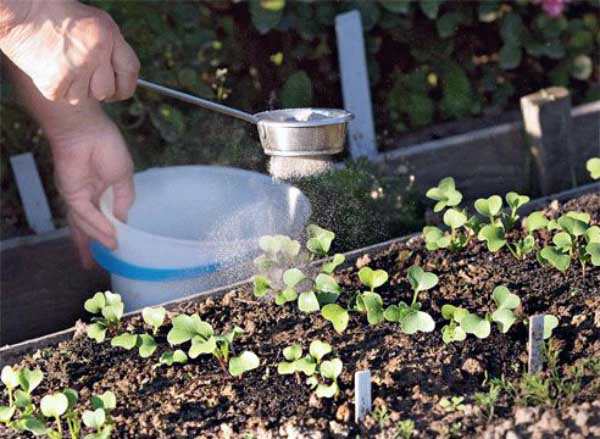
And later, when root vegetables will begin to gain weight - they can be watered a couple of times ash solution-infusion (100 grams of ash per 10 liters of water).
Wood ash - This is a fairly concentrated potash fertilizer, which also contains a little phosphorus.
Fight against the main pest
At the initial stage of growth, serious damage to the radish does cruciferous flea... To prevent this, timely preventive pollination of foliage with tobacco dust or wood ash and cover crops with foil or non-wovento protect against pest attacks.
Especially dangerous cruciferous flea in warm and dry weather, which is why it is recommended to plant radishes as early as possible and water them regularly (the flea does not like high humidity).
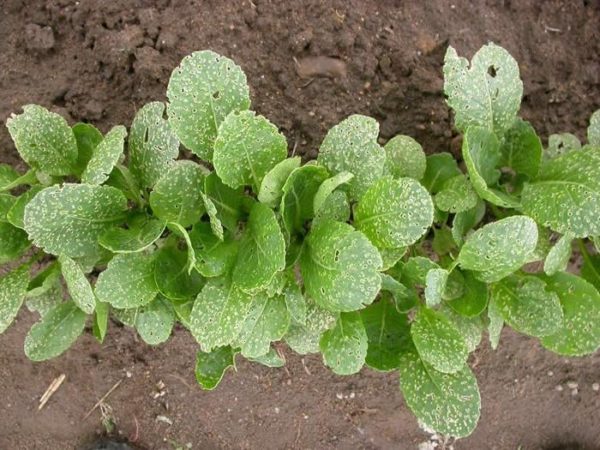
When to harvest radishes and how to store them
As the fruits ripen, selective harvesting should be carried out, which will make it possible for neighboring plants to develop better.
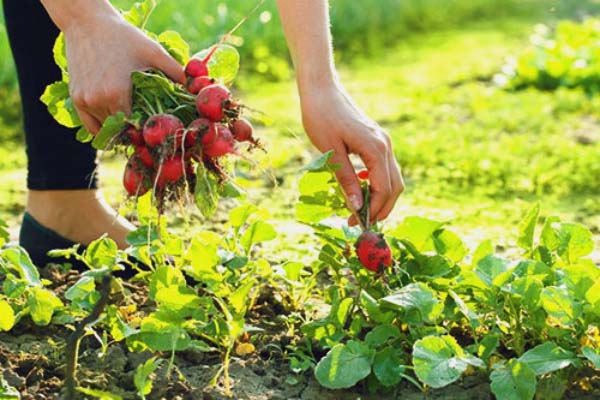
Harvesting radishes must be carried out, based on the size of root crops, in 2-3 stages, that is, first the largest, and after a week or another - the rest. 2 hours before harvesting, water the garden bed, which will make it possible to pull out the radish without much difficulty. After that, it is recommended to peel the fruits from the tops and shorten the tip to prevent premature wilting.
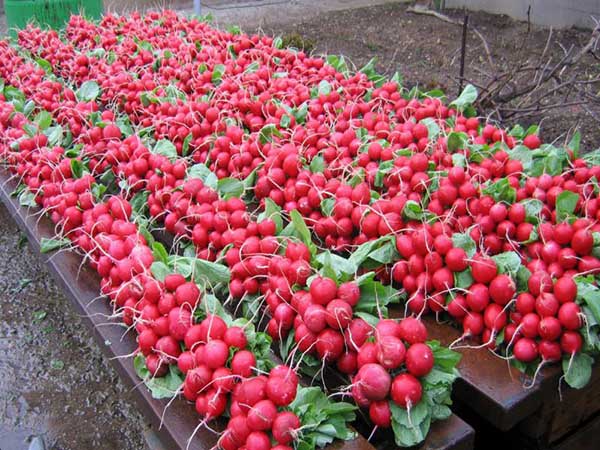
For storage of radishes, it is recommended to use plastic bags, which are later placed in the vegetable compartment of the refrigerator. In this way, the fruits can be stored for several days.
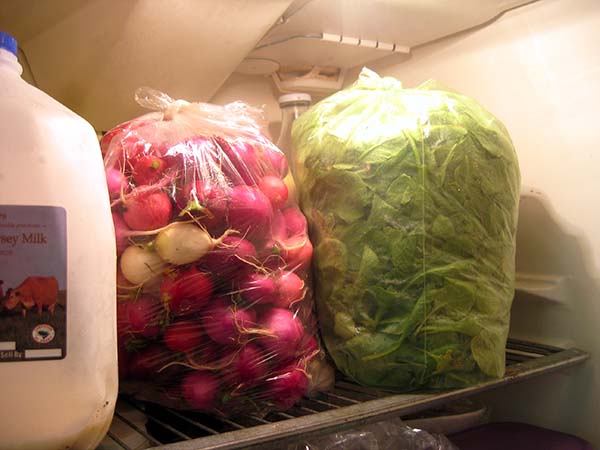
Thus, anyone, even an inexperienced gardener, can grow a good harvest of radishes, if they adhere to the above recommendations and simple rules for planting and care.
Video: how to grow radishes in the open field


Hello Nadezhda! Thanks for the helpful information and video links. I read your article with great interest and learned a lot.